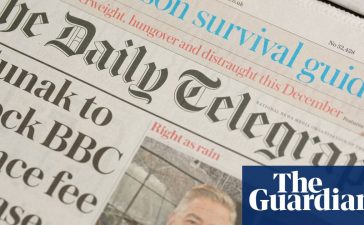The city of Park Rapids issued the results of monitoring done on its drinking water for the period from Jan. 1 to Dec. 31, 2023.
The purpose of this report is to advance consumers’ understanding of drinking water and heighten awareness of the need to protect precious water resources.
The city of Park Rapids provides drinking water to its residents from a groundwater source: two wells ranging from 151 to 166 feet deep, that draw water from the Quaternary Buried Artesian aquifer.
The city works with the Minnesota Department of Health (MDH) to test drinking water for more than 100 contaminants. It is not unusual to detect contaminants in small amounts, according to the report. No water supply is ever completely free of contaminants.
Drinking water standards protect Minnesotans from substances that may be harmful to their health.
Learn more by visiting the MDH’s webpage about basics of monitoring and testing drinking Water at www.health.state.mn.us/communities/environment/water/factsheet/sampling.html.
MDH provides an assessment of drinking water, including how the city is protecting it, nearby threats and how easily pollution can move into drinking water. This source water assessment can be found at www.health.state.mn.us/communities/environment/water/swp/swa or call 651-201-4700 between 8 a.m. and 4:30 p.m., Monday through Friday.
Contact Dean Christofferson at 218-237-2716 or utility.dept@ci.park-rapids.mn.us with any questions about Park Rapids’ drinking water or for information about opportunities for public participation in decisions that may affect water quality.
The U.S. Environmental Protection Agency (EPA) sets safe drinking water standards. These standards limit the amounts of specific contaminants allowed in drinking water. This ensures that tap water is safe to drink for most people.
The U.S. Food and Drug Administration regulates the amount of certain contaminants in bottled water. Bottled water must provide the same public health protection as public tap water.
Drinking water, including bottled water, may reasonably be expected to contain at least small amounts of some contaminants. The presence of contaminants does not necessarily indicate that water poses a health risk.
More information about contaminants and potential health effects can be obtained by calling the EPA’s Safe Drinking Water Hotline at 1-800-426-4791.
The table shows the contaminants found last year or the most recent time for which a particular contaminated was sampled. They also show the levels of those contaminants and the EPA’s limits. Substances that were tested for but not found are not included in the tables.
The report states some contaminants are sampled less than once a year because their levels in water are not expected to change from year to year. If found, they would be included in the table with the detection date.
Additional testing may have been done that isn’t included in the Safe Drinking Water Act. To obtain a copy of these results, call the MDH Monday through Friday at 651-201-4700 or 1-800-818-9318.
Some contaminants are monitored regularly throughout the year, and rolling (or moving) annual averages are used to manage compliance. Because of this averaging, there are times when the range of detected test results for the calendar year is lower than the highest average or highest single test result because it occurred in the previous calendar year.
Groundwater supplies 75% of Minnesota’s drinking water. It’s found in aquifers beneath the surface of the land.
Surface water supplies 25 %of Minnesota’s drinking water. This is water in lakes, rivers,and streams.
Contaminants can get in drinking water sources from the natural environment and from people’s daily activities. There are five main types of contaminants in drinking water sources: microbial, inorganic, pesticides/herbicides, organic chemical and radioactive.
You may be in contact with lead through paint, water, dust, soil, food, hobbies or your job. Coming in contact with lead can cause serious health problems for everyone. There is no safe level of lead. Babies, children under six years, and pregnant women are at the highest risk.
Lead is rarely in a drinking water source, but it can get in your drinking water as it passes through lead service lines and your household plumbing system.
Park Rapids is responsible for providing high quality drinking water, but it cannot control the plumbing materials used in private buildings.
This is how you can protect yourself from lead in drinking water:
- Let the water run for 30-60 seconds before using it for drinking or cooking if the water has not been turned on in over six hours. If you have a lead service line, you may need to let the water run longer. A service line is the underground pipe that brings water from the main water pipe under the street to your home.
You can find out if you have a lead service line by contacting your public water system, or you can check by following the steps at www.mprnews.org/story/2016/06/24/npr-find-lead-pipes-in-your-home.
The only way to know if lead has been reduced by letting it run is to check with a test. If letting the water run does not reduce lead, consider other options to reduce your exposure.
- Use cold water for drinking, making food and making baby formula. Hot water releases more lead from pipes than cold water.
- Test your water. In most cases, letting the water run and using cold water for drinking and cooking should keep lead levels low in your drinking water. If you are still concerned about lead, arrange with a laboratory to test your tap water.
Contact a MDH accredited laboratory to get a sample container and instructions on how to submit a sample at eldo.web.health.state.mn.us/public/accreditedlabs/labsearch.seam.The MDH can help you understand your test results.
- Treat your water if a test shows your water has high levels of lead after you let the water run. Read about water treatment units at www.health.state.mn.us/communities/environment/water/factsheet/poulead.html.
To learn more, visit www.health.state.mn.us/communities/environment/water/contaminants/lead.html, www.epa.gov/safewater/lead or call the EPA Safe Drinking Water Hotline at 1-800-426-4791.
To learn about how to reduce your contact with lead from sources other than your drinking water, visit www.health.state.mn.us/communities/environment/lead/fs/common.html.
Many of our daily activities contribute to the pollution of Minnesota’s surface water and groundwater. You can help protect these drinking water sources by taking the following actions:
- Limit use of herbicides, pesticides and fertilizers on your property.
- Keep soil in place with plants, grass or rocks.
- Cover temporary piles of dirt with a tarp or burlap sack.
- Keep leaves and grass off of streets and sidewalks.
- Maintain any septic systems, private wells and storage tanks to prevent leaks. Seal any unused wells.
- Never flush unwanted or out-of-date medications down the toilet or sink. Always take them to a waste disposal or prescription medication drop-off site. More information is available at www.pca.state.mn.us/living-green/managing-unwanted-medications.
- Safety store hazardous materials such as paint, batteries, herbicides, pesticides and pool chemicals. Dispose of them at a proper waste disposal facility or drop-off event. Do not dump down storm drains, sink or onto your land. Learn more at www.pca.state.mn.us/featured/keep-hazardous-waste-out-garbage.
- Pick up after your pet and put waste in the trash.
- Seal trash bags and keep litter out of the street.
- Chemicals used to break up the ice are called deicers or anti-icers. They can be harmful to the environment, corrosive to driveways and sidewalks and harmful to plants, pets and humans. Always shovel first, and then only apply deicers/anti-icers lightly if needed. Learn more at www.pca.state.mn.us/featured/10-smart-salting-tips-protect-minnesota-waters.
- Seal or repair any fluid leaks that could run off onto streets and into storm drains. Take used motor oil or other fluids to a neighborhood drop-off site.
- Be a water advocate. Spread the word; get involved. There are many groups and individuals working to protect water across Minnesota.
Conservation is essential, even in the land of 10,000 lakes, according to the report. In parts of the metro area, groundwater is being used faster than it can be replaced. Some agricultural regions in Minnesota are vulnerable to drought, which can affect crop yields and municipal water supplies.
Some tips to help conserve water and save money in the process:
- Fix running toilets.
- Turn off the tap while shaving or brushing teeth.
- Shower instead of bathe.
- Only run full loads of laundry.
- Only run the dishwasher when full.
- Use water-efficient appliances.
- Use water-friendly landscaping, such as native plants.
- When watering the yard, water slowly, deeply and less frequently. Water early in the morning and close to the ground.
Our newsroom occasionally reports stories under a byline of “staff.” Often, the “staff” byline is used when rewriting basic news briefs that originate from official sources, such as a city press release about a road closure, and which require little or no reporting. At times, this byline is used when a news story includes numerous authors or when the story is formed by aggregating previously reported news from various sources. If outside sources are used, it is noted within the story.






